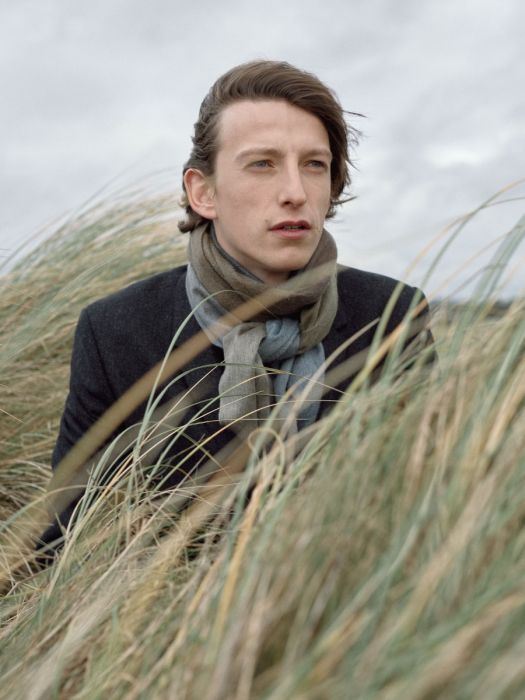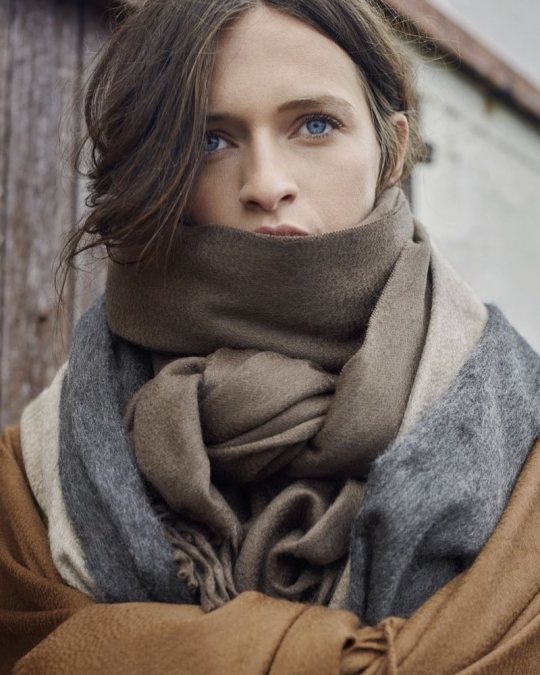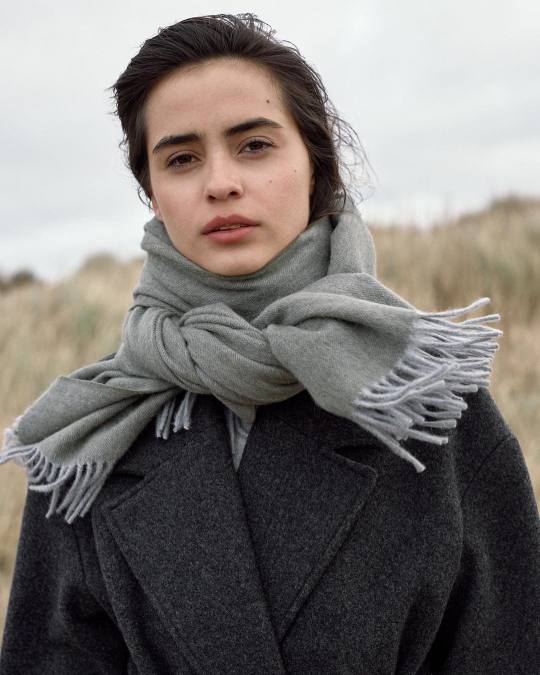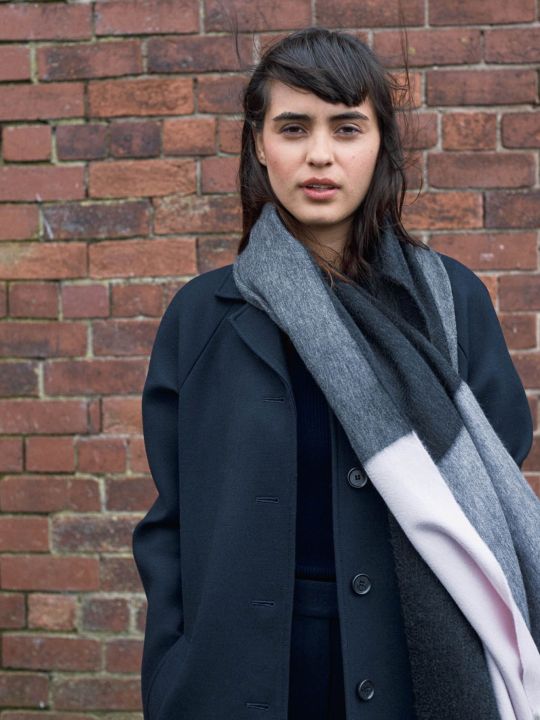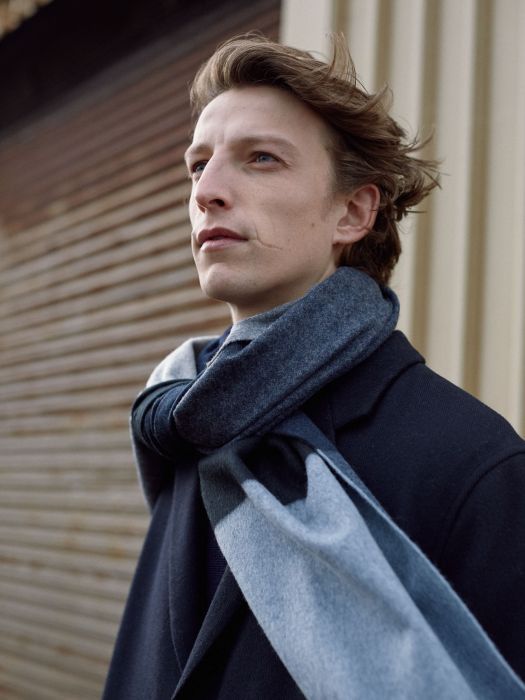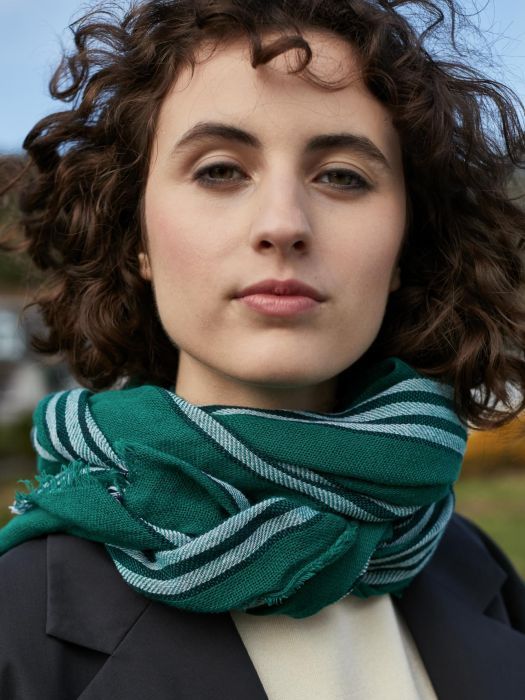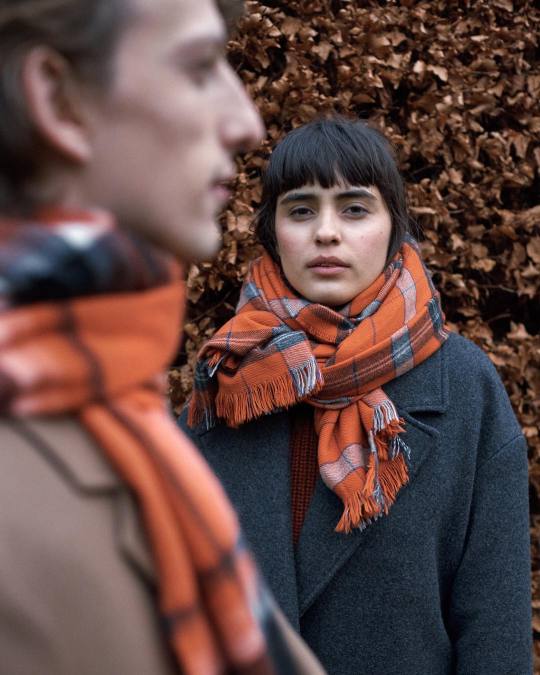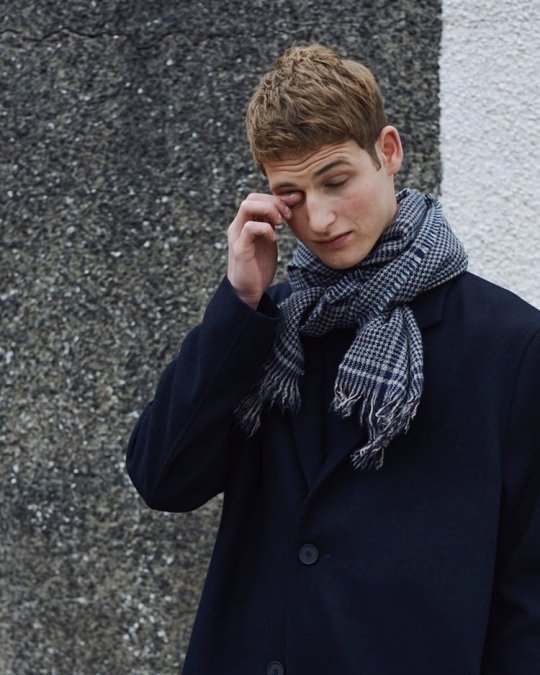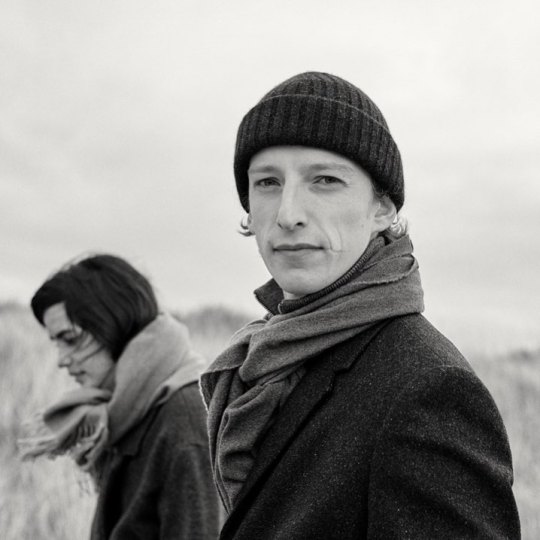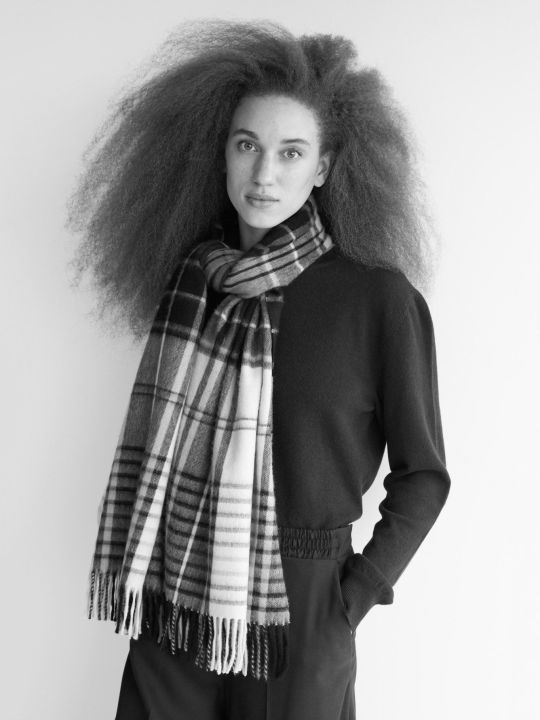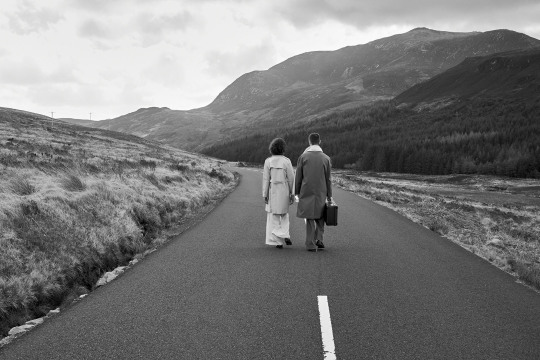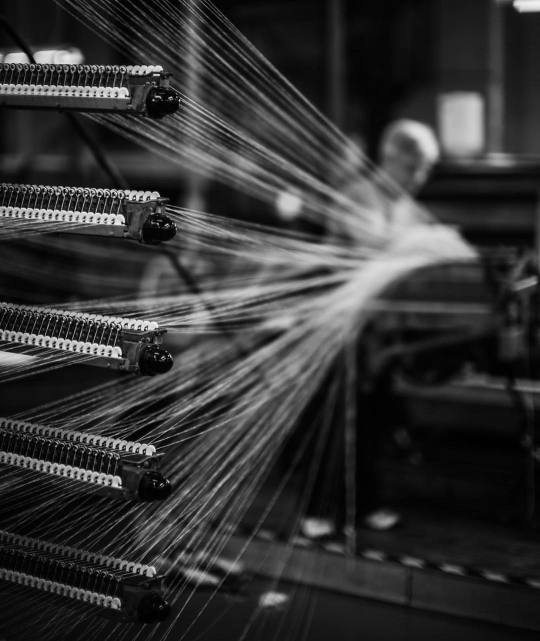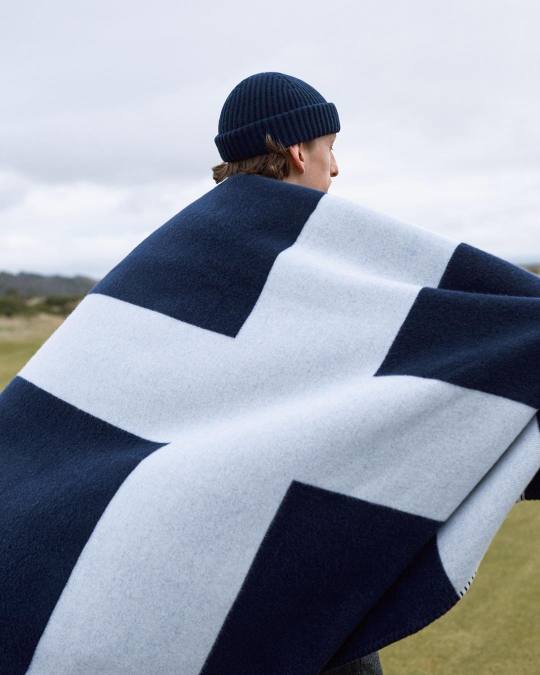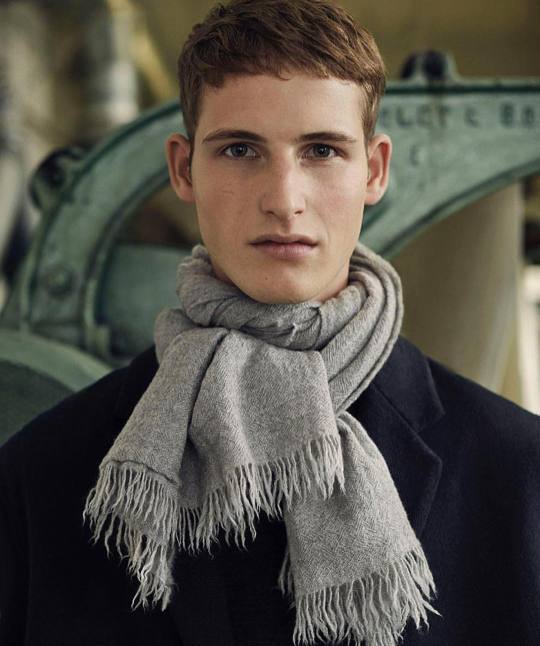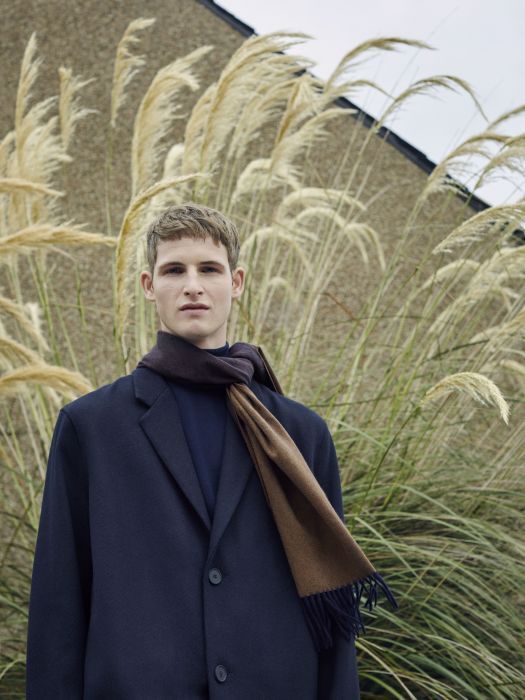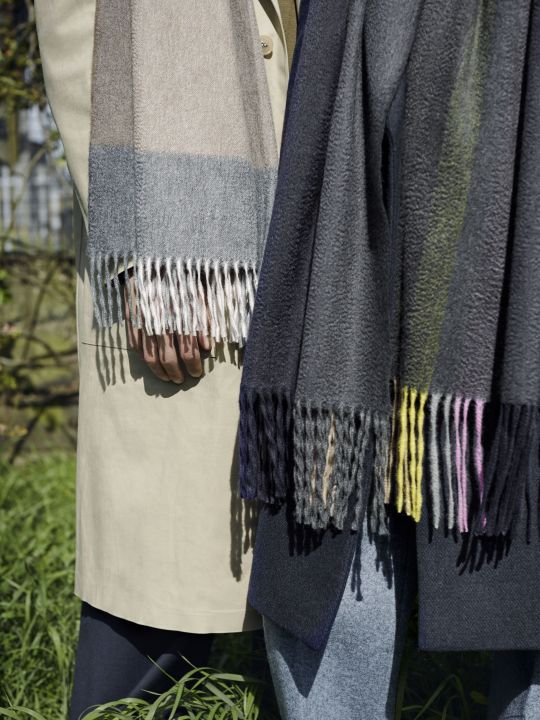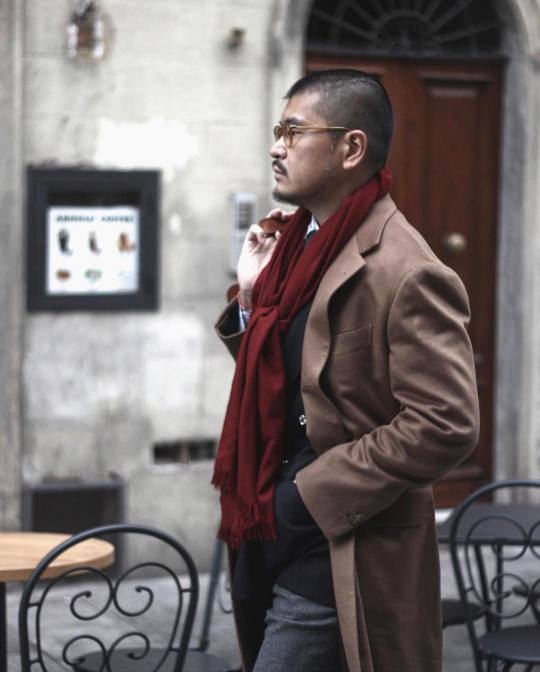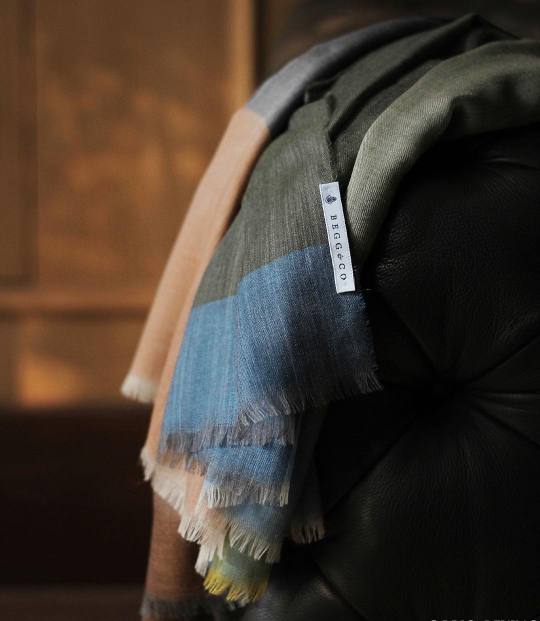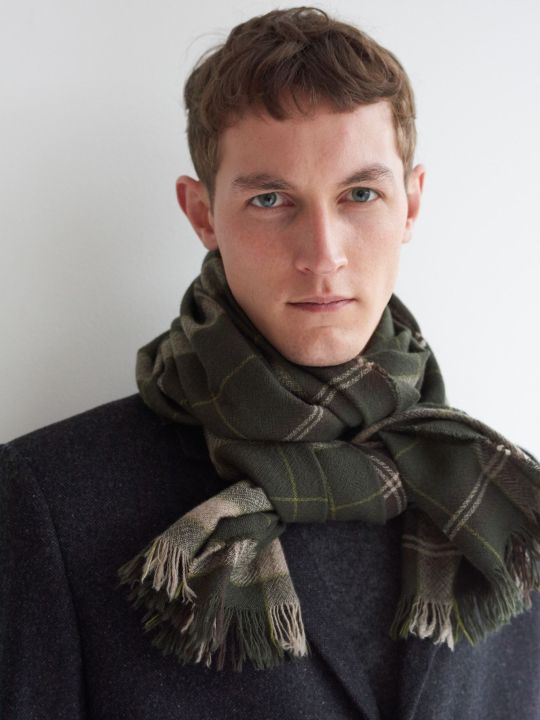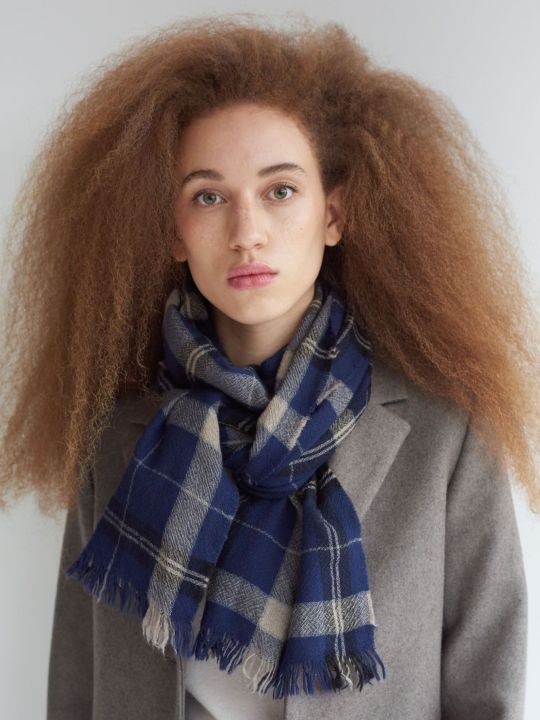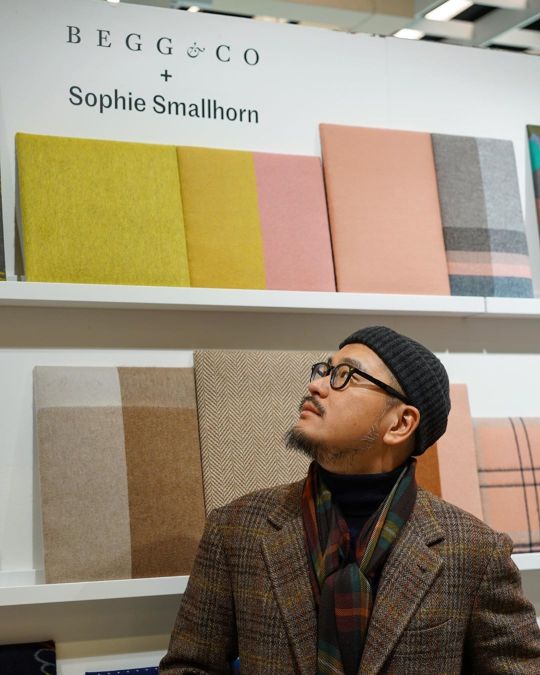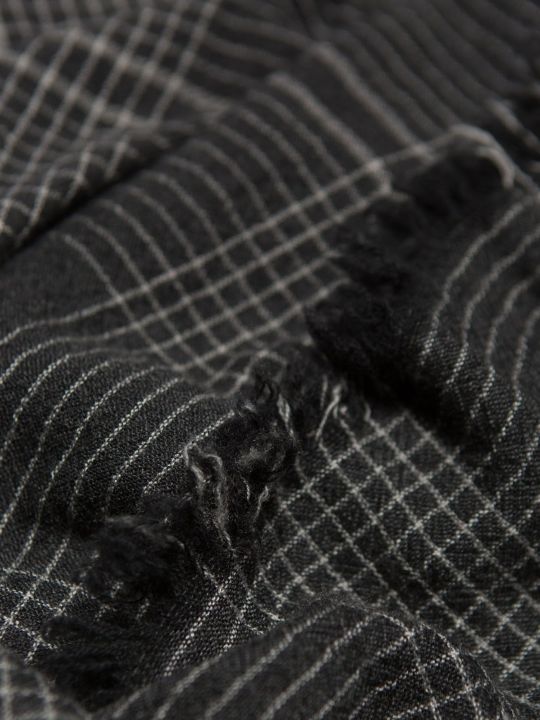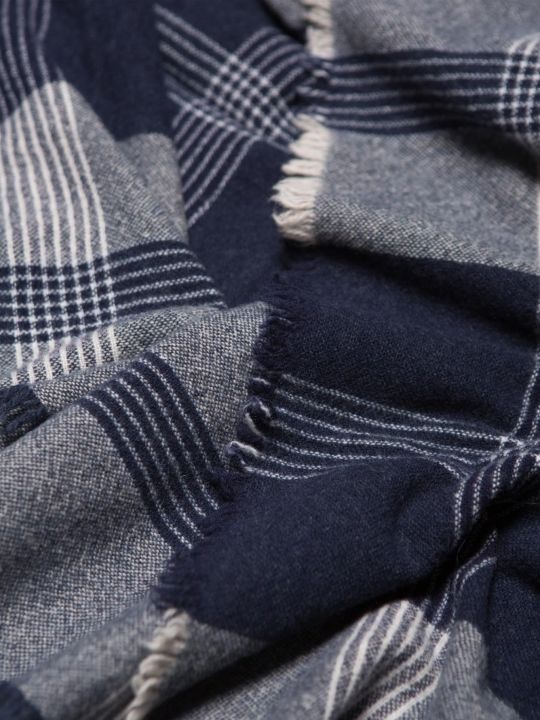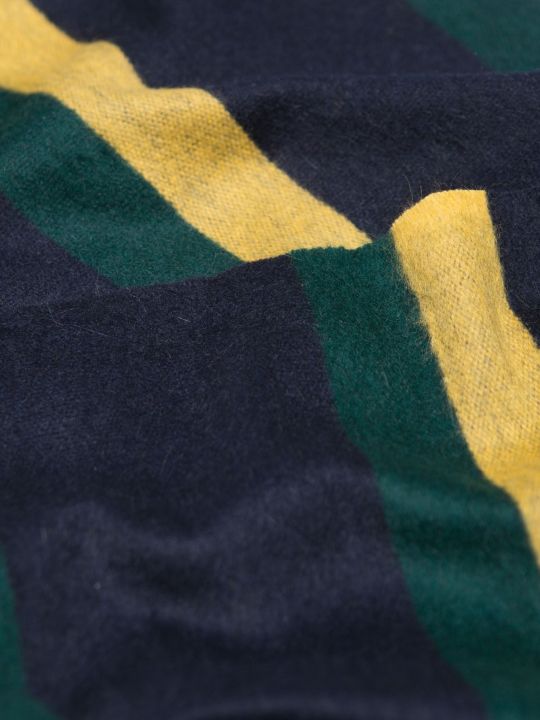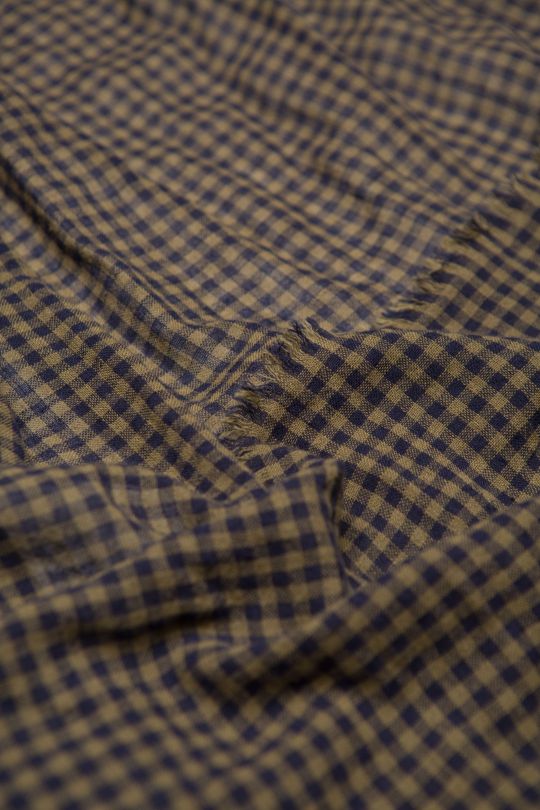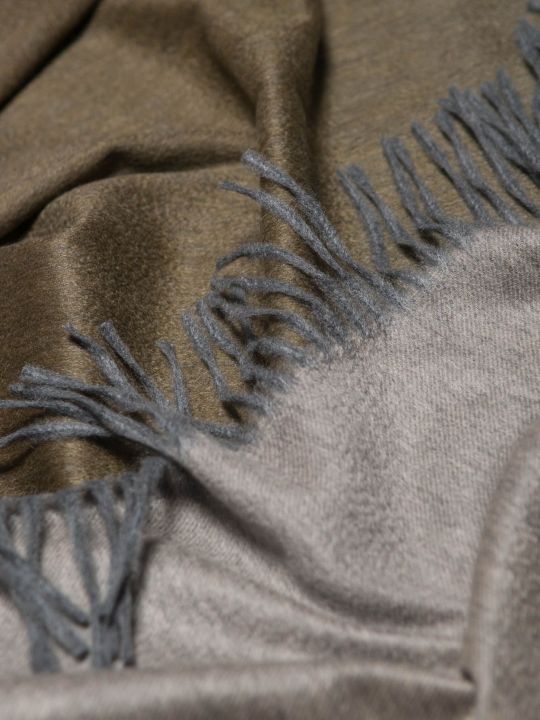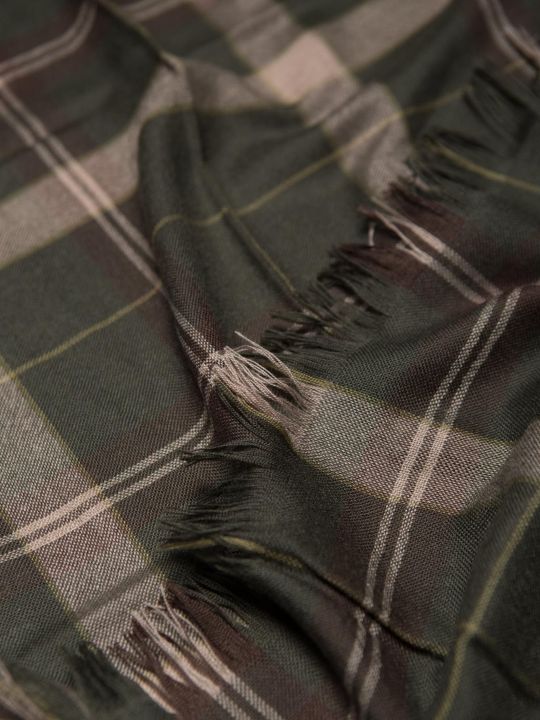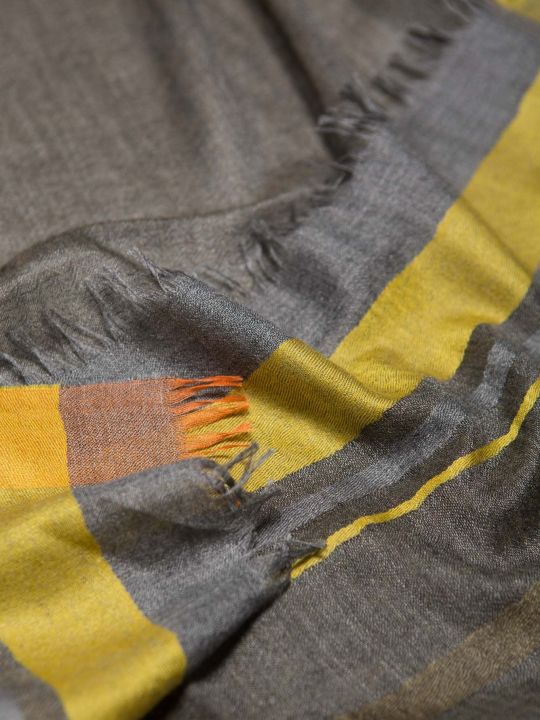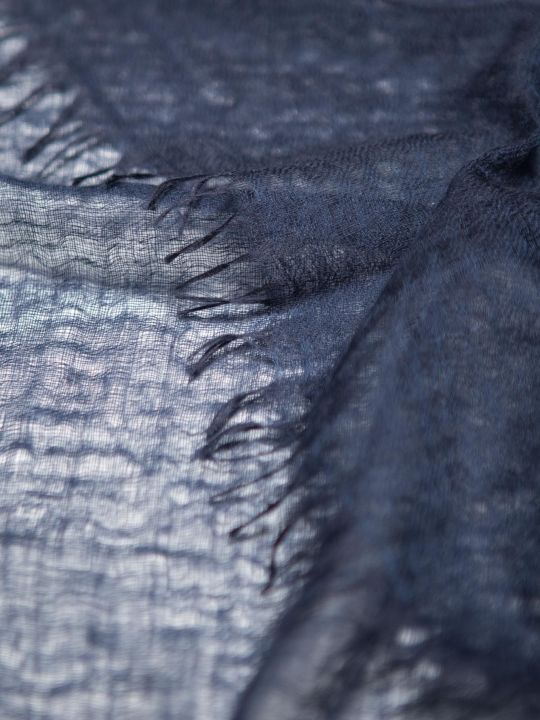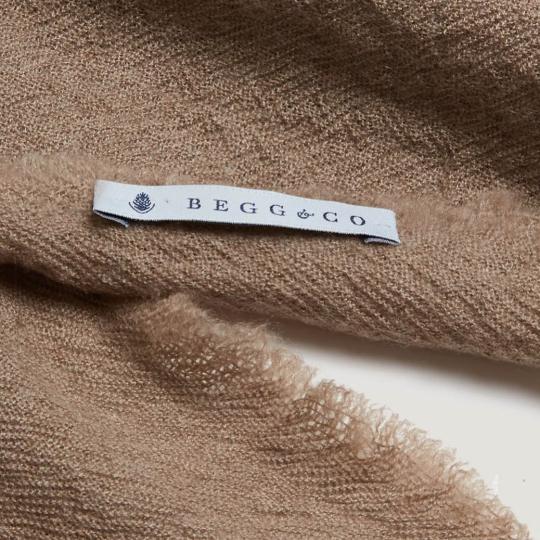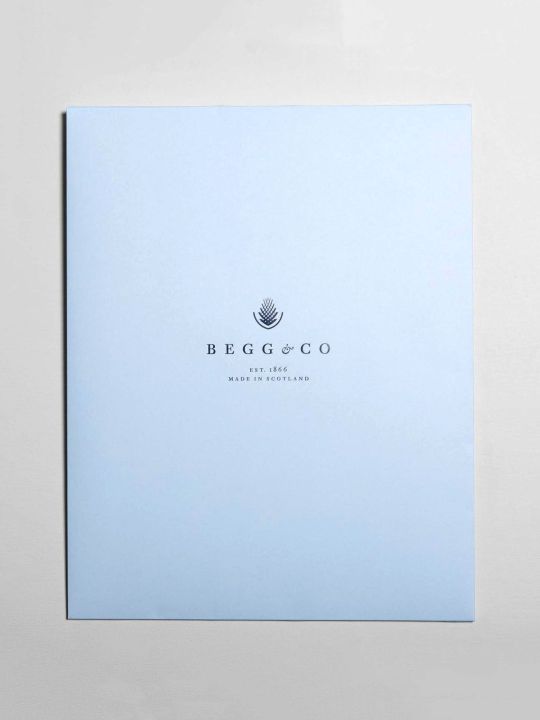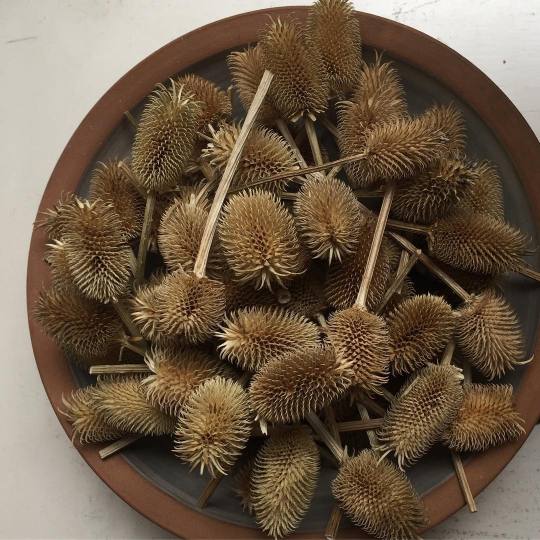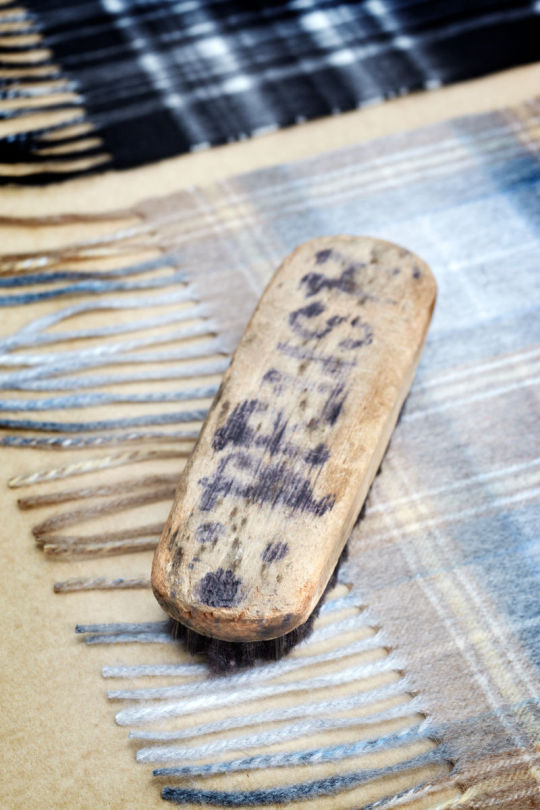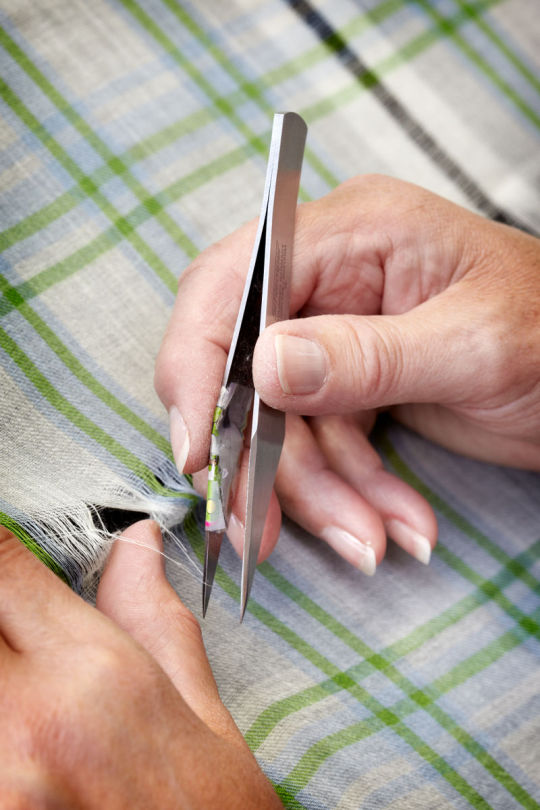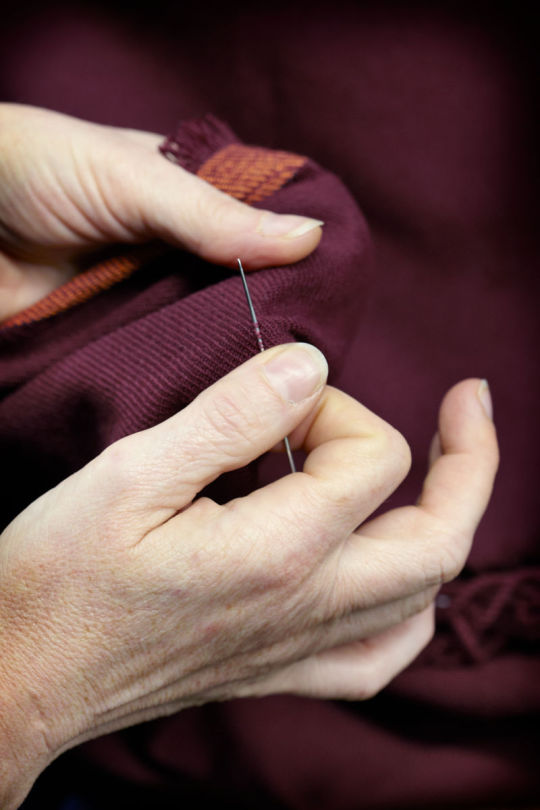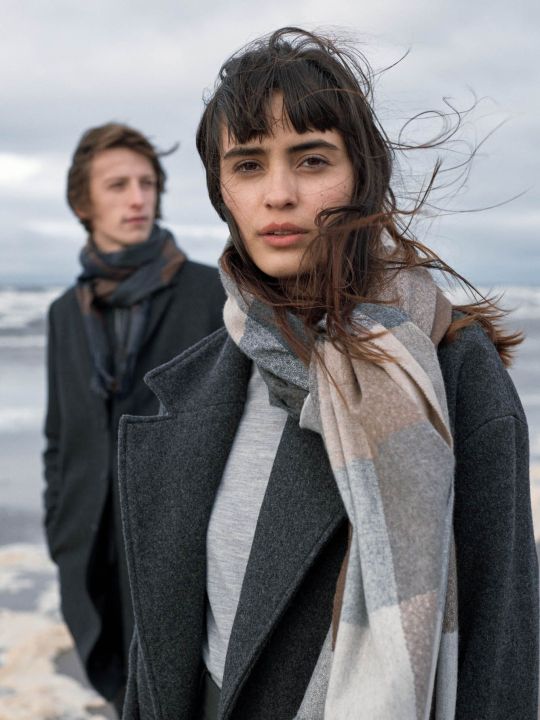
Selkirk is a small Scottish town perched on a hillside overlooking the Ettrick Water, a tributary of the fast-flowing River Tweed, which is where some say Scotland’s most famous fabric got its name. For generations, the people here were celebrated for their shoemaking skills, but like other Border towns, Selkirk was eventually swept into the woolens trade. People have been weaving fabric in the Scottish Borders since at least the Middle Ages, but the trade for much of this time was small, rural-based, and organized through a scattered cottage industry. In the old days, Scottish tweeds were woven at home from local and native wools, often Cheviots that were spun into woolen yarns. Whatever was made was only worn by the local people.
This all changed sometime around the turn of the 18th century. With the signing of the Treaty of Union, Scotland and England became new state of Great Britain. The Industrial Revolution was just starting to emerge and Hawick received its first four knitting frames. Certain towns – Hawick, Galashiels, and Selkirk, included – were conveniently located along the main roads connecting Edinburgh and Carlisle. This gave them access to London and other major cities, helping them distribute finished woolen goods and, when steam power replaced water, bring in fuel. More importantly, the Union gave Scotland better trade opportunities with Britain’s colonies around the world. Soon, people as far flung as India and the Americas were wearing Scottish tweeds and tartans.
What the first wave of globalization gave, the second took away. Like other Border towns, Selkirk is quieter now. The looms stopped chattering a long time ago and today the town is better known for its bannocks, a type of dry fruitcake. During the heyday of Scottish manufacturing, the knitwear trade employed nearly 10,000 people – more if you counted wovens. Hawick had sixteen mills and Pringle alone produced more than 66,000 garments per week. These days, Hawick has half that number and Pringle has long offshored their production. Last week, one of Scotland’s three remaining Harris Tweed mills, Carloway, suddenly stopped production and is facing possible closure. Five years ago, Caerlee Mills, makers of the legendary Ballantyne, shut off their machines after 225 years operation (the building was soon after demolished).

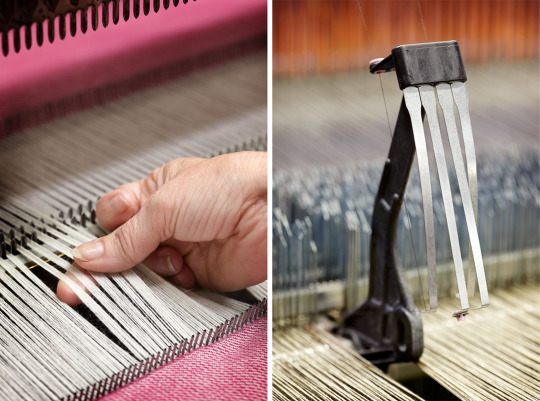
On the upside, if you see a made-in-Scotland label nowadays, the quality of the item is likely to be good. The firms that have managed to survive are often the best in their class. William Lockie, Barrie, and Scott & Charters are among the finest knitwear producers in the world. Todd & Duncan supplies the industry with top-grade yarns; Lovat Mills weaves some of the loveliest tweeds. And for the sort of scarves, shawls, and mufflers you’d want to wrap around your neck this time of year, you’d be hard pressed to find something better than Begg’s. The company was founded over 150 years ago in the industrious town of Paisley, which at the time was a focal point for Scotland’s textile trade (it’s also where the iconic pattern paisley got its name). At the turn of the century, they relocated to the port town of Ayr, which is where they’ve remained weaving since.
There are actually two Beggs. Alex Begg is the production side of the company, with a mill that still does private label work for other brands. Then there’s Begg & Co, which is the in-house label that’s sold to shops and customers around the world. As a brand, Begg is unique in how they’ve been able to update an old Scottish quality – the earthy colors, woolen yarns, and traditional tartan patterns – and bring it into a more modern context. These aren’t the kind of scarves you’ll commonly find hanging in the back of a dusty trad shop (although, those can be good too). They’re more modern and luxurious, but still retain that traditional character that makes Scottish woolens so special in the first place.
Every brand likes to say they ride the line between contemporary and classic, but few do it so well. A lot of this has to do with Begg’s team, which is full of people who have done similar work elsewhere. There’s Ann Ryley, who came into Begg from Drake’s about ten years ago. Begg & Co. is somewhat of her brainchild (the label debuted just a few years after she came into the company). Michael Drake, founder of Drake’s, also serves as a menswear design consultant. And then there’s Begg’s Creative Director, the very talented Lorraine Acornley. She’s worked twenty years as a knitwear designer for labels such as Albam, ESK, and Connolly – all companies that have been similarly successful in making classic men’s style feel relevant to a new generation.
“Some of this is about packaging, you have to make products feel right for the intended audience and show how they can be part of a modern lifestyle,” Acornley explains. “The other part is about design. Many of the older mills are stuck in a certain way of doing things. If it’s knitwear, for example, a company may be wedded to a certain design because that’s how they’ve always made sweaters. At Begg, I feel fortunate to be able to work with people who are willing to experiment, but also do so in a way that shows an appreciation for the classics.”


The creative process begins with a design brief, which captures a season’s artistic direction. Inspiration can come from anywhere – the city lights, a trade exhibition, or even an old piece of wood that someone found washed ashore. “That helps set the tone and mood, which in turn defines things such as the color palette,” Acornley says of the process. “The brief can contain photos or it can be a very verbal thing. I share the brief with the other designers and we come up with ideas for a coming season.”
From there, the process isn’t too unlike what happens at a suiting mill. The fabrics are warped, woven, washed, pressed, and then checked. Each scarf goes through thirty-five different processes before it’s packaged and shipped. The most important steps, however, happen outside of the mill. “Just like you can’t make a good dish out of poor ingredients, you can’t make a good scarf out of low-quality yarns,” Acornley says. “We source ours from different spinners. Some are based in Italy, others in Scotland, but they’re always best-of-field. We talk to technicians about what we want to do and then the yarn development goes through different stages and trials. Sometimes the process of developing a new product can take months or even years.”
Begg is a good example of how a heritage mill can incorporate new technologies without losing its identity. Customers often think that new machines are just about cutting corners and lowering quality – it’s an old neo-Luddite trope that pits the old against the new. But modern technologies can also help develop better products. At Begg, they’ve patented a technique for weaving super lightweight, pure cashmere scarves from yarns that are so fine, they would normally snap on older looms. Begg is only able to do it because they first coat the yarns with a dissolvable resin, which washes out during the milling process. “Those scarves have so much cashmere, the yarns would stretch five kilometers if you laid them end-to-end,” Acornley says of the company’s Wispy model. “Our Filigree scarves are even finer. They almost looks like spider’s webbing.”
Begg keeps their new machines running alongside old ones. Figuring out which to replace just depends on the process. Their pummeling machine, for example, was first bought at the turn of the 20th century. Like how old floor boards have a naturally polished look that can’t be replicated, they’ve kept this machine running because the wooden boards inside have become uniquely smooth from nearly a hundred years of use. “We have a new machine, but it doesn’t seem to achieve the same quality. There’s something about the way these old wooden blocks knock fibers around that helps the final product take on a certain character.”
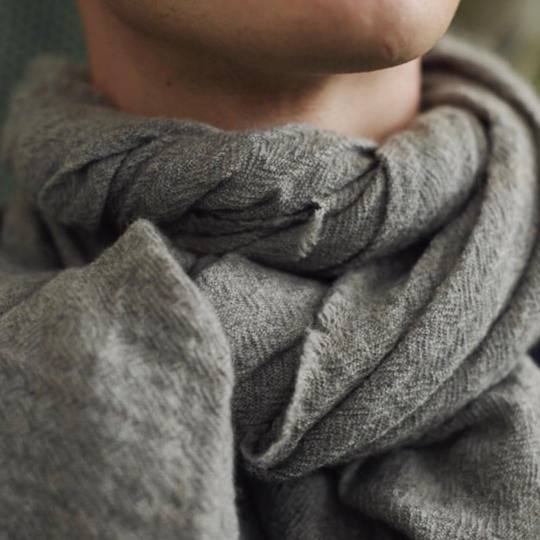
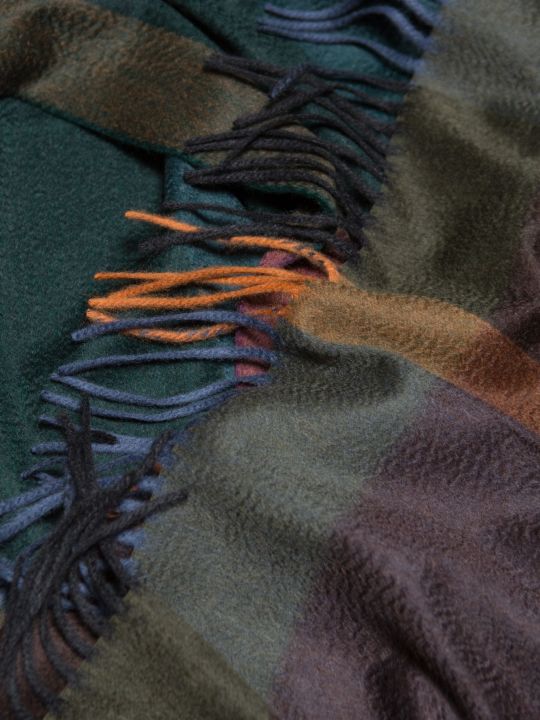
Finishing is a big part of what makes Begg’s scarves so special. Like Neapolitan cheese and New York bagels, the Scots like to say their woolens have a regional character that can’t be duplicated elsewhere. Many chalk it up to the water, which the mills source from nearby, fast-flowing rivers. Supposedly, since the water is naturally soft and has just the right pH balance, it’s particularly good for washing wool. And all woolens have to be washed at some point. When the yarns first arrive to a mill, they have oils to help them smoothly glide over knitting needles (weavers call them “greasy”). Once the fabric has been woven, however, those oils have to be taken out.
Begg also applies other finishing techniques. Their popular Arrans are made from pure cashmere and then finished using hand-harvested teasels, which are hooked onto a machine and gently brushed across a surface in order to create Begg’s iconic ripple effect (the texture reminds me of a seal’s wet fur). They also employ various tumbling techniques. “Our Kishorns come in both a pressed and tumbled finish. The tumbled finish looks like you’ve put a scarf through a dryer. It has a crinkly, fluffy quality,” says Acornley. “The pressed ones have a more immaculate finish and would look good with tailored garments. The tumbled ones would be for someone who’s into Engineered Garments or Post Overalls. They have more of a weekend look.” (In the photos directly above, you can see the tumbled Kishorn and brushed Arran, respectively).
Begg’s scarves aren’t inexpensive, and with so many cheaper alternatives on the market, it can be hard to justify the cost. I can only say that, having owned so many scarves across a wide spectrum of prices, the ones I reach for the most are from Begg (along with Stoffa and Drake’s). They’re beautifully woven and colored, modern but classic, and have just enough volume to lend visual interest when worn. In the opening of his book True Style, Bruce Boyer encourages men to wear something around their collar:
It’s an unfortunate truth that most men have no idea what to do with their necks. When not safely ensnaring their napes in a necktie, they seem to forego all other options and literally stick their necks out, airing them like so many turkey wattles projecting from their open collars, or attempt solutions with lesser articles of clothing. From time to time, for instance, the turtleneck sweater will make one of its periodic returns to the sartorial scene as a sheath for the exposed gullet, and many – too many – men will embrace it with the passion of the hopelessly desperate. Whole squadrons of otherwise sensible gentlemen will arrive at cocktail parties sporting their navy double-breasted blazers with white turtleneck jerseys. Clustered on the patio, they will resemble nothing so much as a cast of movie extras between takes of Sink the Bismarck.
Bruce’s solution is to wear an ascot. I’m not dashing enough for that, so I reach for a scarf instead. Begg’s are among the best, if not the best, I’ve come across. If you’re getting your first one, I recommend a non-tumbled Kishorn in a staple color such as navy, mid-gray, or tan. Those can be worn with just about anything. For your second, consider a navy or burgundy check, which will help add visual interest to plainer ensembles. A third scarf can be a washed model for more casual wear. You can find Begg these days at No Man Walks Alone, The Hanger Project, The Rake, (all three sponsors on this site), Mr. Porter, Trunk Clothiers, Frans Boone, East Dane, and Begg’s own site.
